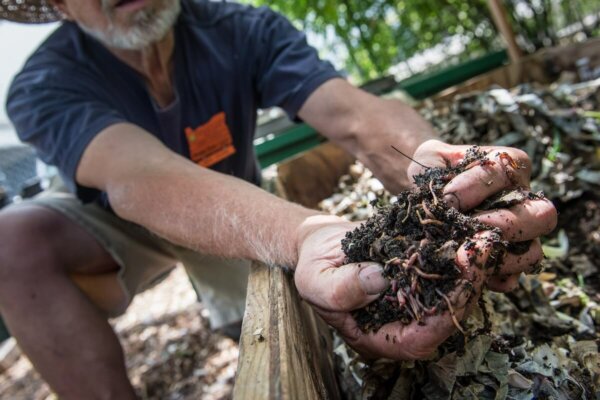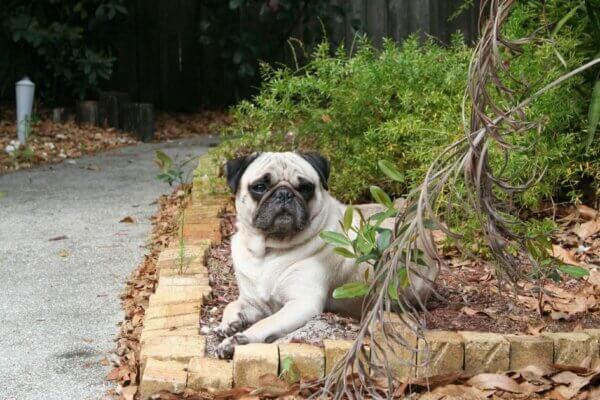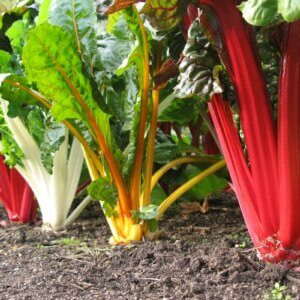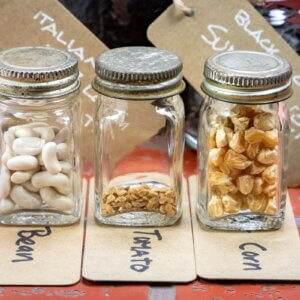Many rural homesteaders faced with a continual problem of dealing with pet waste, ask “can pet poo be composted?” The answer is a resounding yes. Dog poop can be easily composted in a backyard composter bin containing red worms where it is readily converted into rich compost. Composting pet waste prevents these materials from reaching landfills where they consume needed space and emit methane, a potent greenhouse gas.
Before we go any further, I’d like to add a few important notes about composting any animal feces:
- DO NOT use the finished compost to amend any soil that grows edible crops.
- If your home or farm is near a fresh or salt water supply, be sure to avoid using pet feces compost as it has the potential to run off into the water supply.
- For the sake of avoiding cross-compost-contamination, keep your traditional compost pile separate – and far away – from your one that includes animal feces.
- When in doubt, refer to the USDA’s guide for composting pet waste.
https://www.instagram.com/p/BUxnvuHFNrC/?tagged=petwastedisposal
Composting does more than just remove pet poop from the environment where it can contaminate streams and groundwater. Proper composting destroys bacteria and pathogens to produce a safe, nutrient-rich, quality soil amendment, while eliminating the transporting of pet waste for disposal, saving landfill space, hard-earned money, and energy.
Fact is, composting reduces the volume of pet waste by more than 50 percent. If you are an environmentally conscious pet owner, please do your part to protect our fragile planet: Consider composting as part of your homestead manure management plan.
Vermicomposting Is The Way To Go
The easiest way to start the composting process is to put the ingredients to be composted in multiple 30-gallon plastic garbage cans with airtight lids. To accelerate the decomposition process, drill multiple ⅛-inch air holes in the sides of the garbage cans for ventilation.
To begin the process, mix three shovelfuls of pet waste with generous amounts (about six shovelfuls) of carbon-rich bedding materials. This includes non-treated sawdust, shredded paper, dry leaves, grass clippings, or degradable livestock bedding materials. Next, blend with a couple of packets of septic starter, available for purchase online or at local hardware stores and home and garden centers. Add two to three gallons of water to the mixture to activate the septic starter.
https://www.instagram.com/p/BSR4kFfDYGg/?tagged=vermicompost
In less than 48 hours, the non-caustic starter begins its job of encouraging natural bacterial growth, and you can add more sawdust and doggy doo. Add pet waste and organic material daily. Give the mixture a gallon of water and one packet of septic starter every two weeks until the garbage can is full.
Hot compost the mixture for a minimum of 60 days before feeding the pre-composted material to your worms. Repeat the same process as you utilize additional garbage cans.
After the carbon sourced material and the pet poop are well-aged, add pre-composted material to your vermicomposting system or spread out in windrows for the worms.
Experienced composters advise that it is essential to maintain the right ratio of pet waste and carbon sourced additives such as sawdust: two shovelfuls of pet waste or barnyard manure to one shovelful of sawdust or other organic material.
https://www.instagram.com/p/Bd6GjHAhUKt/?tagged=vermicompost
If you have an indoor cat and use a carbon-sourced material for the litter box, dump the whole stinky mess in the compost system. To achieve optimum, safe results make sure the compost reaches a specified temperature of at least 140 degrees Fahrenheit or you may not kill the pathogens carried in the pet poo.
- Maintain a separate worm box, bin, pile, or commercial vermicomposting system for processing pet waste. The size of your vermicomposting system should be sized to the number of pets contributing. When establishing a vermicomposting system, make sure it is located in a manner that prevents run-off into the surrounding environment. Apply the nutrient-rich end product to non-food crops only.
Numerous scientific research studies confirm composting worms (red worms and Georgia red wigglers) destroy human pathogens while helping to produce rich compost. However, a word of caution, correct vermicomposting requires a high density of worms, and there is no guarantee all of the pet waste material will pass through the digestive systems of the worms. Retention time for vermicomposting should be no less than 90 days.
- Retention time or “curing” means merely letting your compost rest for a while. Composting and winemaking have a lot in common in that the longer it ages, the better the brew.
When it’s complete, compost will be a vibrant dark brown color with a mealy texture similar to coffee grounds. Finished pet waste compost is not odorous and offensive. It emits a rather pungent mossy scent and does not draw flies or vermin.
A Safe Soil Amendment
Pet waste compost is an excellent organic soil supplement, improving soil structure to provide plant nutrients, aeration, and moisture retention. When applying pet waste compost to the landscape, use as a surface dressing mulch or mix one part compost with three parts potting soil and work into the soil around the base of plants.
Due to the fact that pet waste compost can have a relatively high salinity, it is not recommended for transplanting tender young plants or germinating seedlings.

Pet waste compost should not be used on food crops cultivated for human consumption. However, it is a fine source of organic fertilizer for landscaping: well suited for potted plants, flowerbeds, shrubs, trees, and lawn or pasture re-vegetation. While pet waste compost should not be used on leaf, stem or root, vegetables, it is safe to use on berry bushes or fruit and nut trees.
A Simple Pet Poo Solution
If you only have a couple of small family pets, a simple system is to sink a bottomless 5-gallon plastic bucket with a tight-fitting lid in the ground and dispose of pet waste by covering waste with water and a packet of septic starter. The excrement will turn to liquid and slowly seep into the surrounding soil leaving humus that slowly decomposes. With this simple system, there is no smell, even in the hottest of August days.
https://www.instagram.com/p/Bc5H67KFgiC/?taken-by=purslanegardens
If you opt to purchase green plastic buckets, when buried in the ground with only the rim and lid visible, they are not obtrusive and blend into the surrounding vegetation. Homesteaders cultivating a fruit orchard suggest burying a composting bucket at the base of each tree.
Why Can’t I Just Leave It Laying Around?
The average-sized dog excretes up to a pound of waste per day – or about 325 pounds a year. A cat excretes about 60 pounds a year. Do the math: It is easy to see why proper disposal of millions and millions of tons of pet waste is a “mountain-sized” problem nationwide.
Pet waste can pollute surface and groundwater, cause an unpleasant odor, attract flies, and create an unsanitary environment for pets and people. In fact, in 1991, the United States Environmental Protection Agency (EPA) placed pet waste in the same classification as insecticides, herbicides, grease, oil, acid drainage from abandoned mine sites, and other toxic chemicals.
Pet poo does more than just contaminate waterways with disease transmitting bacteria. The runoff from decaying pet waste provides nutrients for algae and invasive weeds that grow in waterways.

As algae and plants proliferate, thriving in your pet’s feces, the light that penetrates the water surface is limited. As a result, oxygen is depleted, and marine life is asphyxiated. Oxygen-deprived stagnant waterways become a murky brownish-green, stagnant, produce a foul odor, and are unsafe for swimming, fishing, or boating.
In addition to concerns about the state of local waterways, it is imperative that homesteaders focus on the impact of pet waste close to home. Does pet waste drain into your farm pond or water features?
Diseases Transmitted by Pet Waste
Although germs and bacteria from family pets rarely spread to people, it pays to be prudent in protecting yourself and family from pet-borne illness. Always remember to wear gloves and thoroughly wash your hands after handling pet waste. The CDC (United States Centers for Disease Control and Prevention) notes that pet excrement contributes to several diseases that animals can transmit to humans.
These diseases, known as zoonoses, transmitted by pet feces, include parvo, cryptosporidium, giardiasis, and salmonellosis. Dog doo can contain hookworms, roundworms, tapeworms, whipworms, and other parasites. People infected with these “bugs” may experience nausea, vomiting, diarrhea, stomach cramps, fever, muscle aches, and severe headaches
Children are especially susceptible, often playing in the dirt and then putting things in their mouths. It’s not just the kids that are at risk. Anyone who comes in contact with contaminated soil, whether it be by walking barefoot through the grass, playing sports, or gardening is exposed to pathogens and contact with worm eggs: especially your family pets.
Cats can spread bacterial, viral, and parasitic infestations to humans. The two serious diseases carried by cats with potentially serious or fatal consequences are rabies and toxoplasmosis. Toxoplasmosis can be transmitted to humans when they fail to wash their hands after handling cat feces when cleaning out litter boxes, gardening, or when children play in sandboxes or soil contaminated by cat excrement.
Pick Up After Your Pooch
Just as you pick up after your pooch at the park or other public areas, proper pet waste management is just as crucial at the family homestead. When pet droppings are left unattended on your lawn, garden, or pasture, not only do they burn vegetation and leave unsightly brown or bare spots, but the eggs of roundworms and other harmful parasites linger in the soil for decades.
https://www.instagram.com/p/BRxTNq0D7hR/?tagged=pickupafteryourdog
Animal waste does not merely decompose and go away. The easiest way to avoid pet waste problems is to use a pooper scooper and always clean up after your pet and dispose of waste properly.
References
- Composting Dog Waste, United States Department of Agriculture
- Pet Waste, City Farmer
- The truth about cats’ and dogs’ environmental impact, UCLA Newsroom
- Dogs, United States Centers For Disease Control










































Leave a Reply